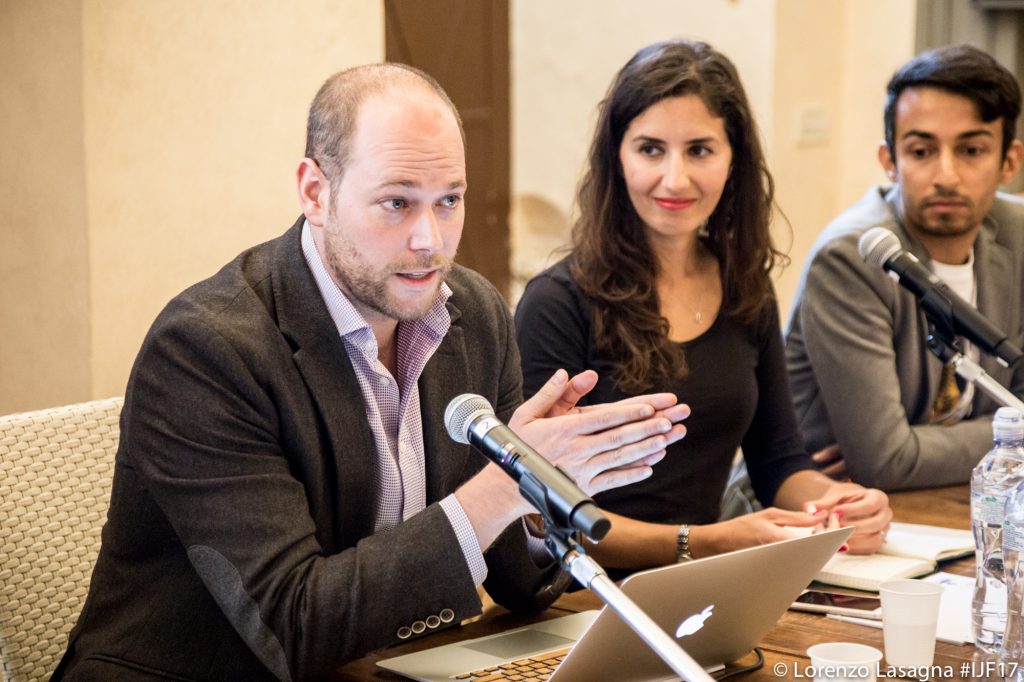
Facebook is not going anywhere – let’s accept it. The question is no longer if news organizations should use Facebook, but how.
In a panel discussion that was advertised as a ‘deliberately provocative, one-sided appeal to journalists and publishers to wake up,’ there was no room for doubt that Facebook could be anything but an opportunity.
“Facebook is huge. 1.4 billion users log into Facebook every day,” said Aron Pilhofer, James B. Steele Chair in Journalism Innovation at Temple University, who welcomed the audience by pointing out again and again that social media platform is ‘big, big, big,’ and it’s here to stay.
So what does this mean for news organizations?
Create content specifically for Facebook
First of all, journalists and editors need to change their attitudes. Social media should no longer be regarded as platforms where content is recycled, where videos for TV are dumped on, or where long formats are teasered. Content for Facebook has to be tailored to the audience, especially if it’s video content.
This means: make videos specifically for Facebook. News organizations should invest time and resources to create videos for social media only.
“Videos are the most powerful type of content that is shared. You can reach new audiences and new demographics,” said Garret Goodman, Director of Business Development at Wochit.
But should journalists create content for free? Should videos be solely published on Facebook and nowhere else? Critics in the audience were quick to point out that this approach is an expensive strategy that not all news organization can, or are willing, to afford.
Yet they should. As Goodman explained it’s a long-term investment: “Videos are the best way to share your brand. You can do your distinctive, visual style.” If you are unique and true to your brand, you can create a loyal audience who will recognize and engage with your other content, too, he added.

Measure engagement, not likes
If news organizations want to embrace Facebook, they have to change their way of measuring success. For far too long, social media teams in newsrooms focused on measuring views and likes, but it’s more important to measure rates of engagement and rates of retentions, pointed out Esra Dogramaci, Senior Digital Editor at Deutsche Welle. “We need to be clear about which numbers are for vanity and PR and which numbers actually mean something. Views are very nice but it’s not the same as retention,” she said.
Quality beats quantity. While a large fan base is still crucial, success on Facebook depends on loyal users – people who not only watch a video but also click on a link to an article that’s published the next day, who share and comment on posts. Therefore, digital media strategies should include a variety of measurements beyond views and likes.
How to do that? With a new Facebook tool called Crowdtangle. “Use Crowdtangle, analyze the numbers and become digitally literate,” said Dogramaci and pushed her colleagues to be disruptors: “If you are in a scenario where none of this is talk, I encourage you to disrupt it. If you get into trouble, blame it on me and I’ll be there to back you up.”
Experiment and collaborate
Facebook and the way users interact with it changes quickly. So news organizations have to adapt on a regular basis and experiment with new formats. Newsrooms should adopt a start-up culture, said Sakhr Al-Makhadhi, Middle East editor AJ+. “It’s trial and error. You need to figure out what works and what doesn’t.” The best way to do that is to give reporters a chance to be creative without the pressure of publishing the results of their experiments.
Last but not least, news organizations should work with Facebook instead of against it. Talk to Facebook ‘to figure out their algorithms and what they are planning to do in the future,’ said Sakhr. “We are journalists, we want to reach as many people as possible. So let’s accept that the platform is here and embrace it.”